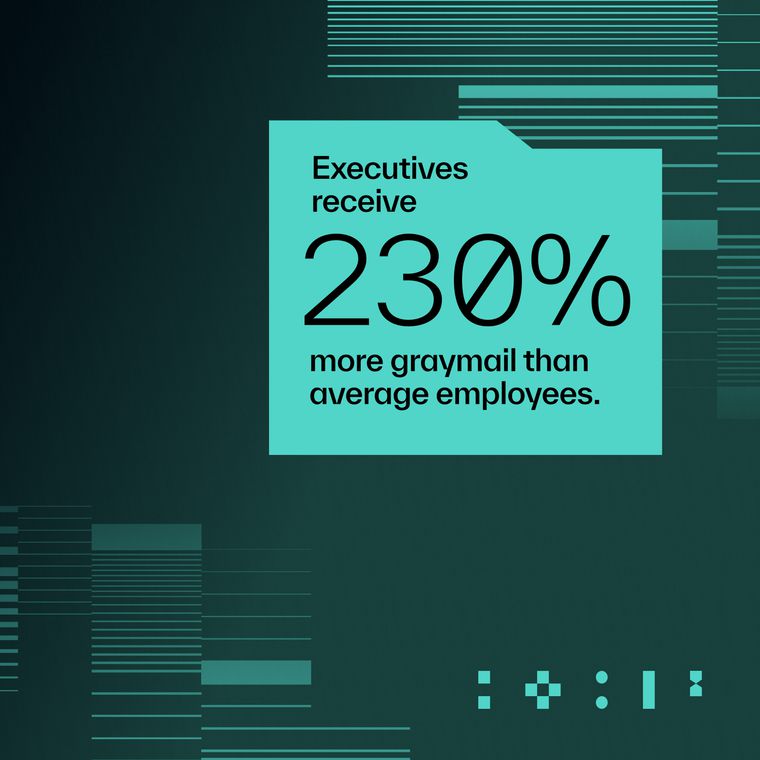Improving Your Cybersecurity Strategy with Modern Threat Response Solutions
Discover some proven modern threat response solutions to improve your organization’s cybersecurity strategy.
July 4, 2025
Traditional security tools were built for known threats and fixed perimeters—but today’s attacks are dynamic, identity-based, and increasingly AI-driven. From sophisticated phishing to supply chain compromise, threats often bypass rule-based detection and leave security teams reacting too late.
Threat Detection, Investigation, and Response (TDIR) helps modern security teams act faster by combining behavioral analytics, automation, and full visibility across email, SaaS, and cloud environments. It enables you to detect novel threats, understand their impact in context, and contain them before data leaves your environment.
This guide gives security operations leaders a practical framework for building TDIR capabilities that match the speed and complexity of modern attacks, with actionable guidance on architecture, process, and tooling.
What Is Threat Detection, Investigation, and Response
TDIR is a continuous security process that helps you find and stop threats before they cause damage. It connects three core capabilities—detecting suspicious behavior, understanding what’s happening, and taking fast, effective action—into a single, adaptive loop.
It starts with broad visibility across email, endpoints, cloud workloads, and SaaS apps. While traditional tools can catch known malware, today’s attacks are more evasive—fileless, identity-based, and increasingly AI-driven. These threats often slip past static rules.
Modern detection uses behavioral analytics and real-time threat intelligence to surface unusual activity: strange logins, unexpected data transfers, or access patterns that don’t align with past behavior. Adding context like IP reputation or asset value helps separate signal from noise, so analysts can focus on what actually matters.
When a credible alert fires, investigation takes over. Automated triage links related events, maps them to known attack patterns, and provides the who, what, when, and how, without requiring a manual search. Analysts get the full story faster.
Interactive timelines and graph views help trace attack paths. Machine learning reduces duplication by grouping similar events, so teams don’t waste time chasing noise. With the root cause clearly defined, you can stop lateral movement and assess impact with precision.
From there, the response flows naturally. Automated playbooks disable compromised accounts, isolate infected devices, revoke access, or deploy urgent fixes—within seconds. Everything is logged for audit and compliance.
And the loop continues. Attack indicators found during response flow back into detection, improving accuracy and resilience over time. TDIR adapts with every incident, helping you stay ahead of phishing, ransomware, and supply chain attacks in an environment where speed and context are everything.
Why Threat Detection, Investigation, and Response Is Important for Enterprises
Enterprises today face a volume, velocity, and sophistication of threats that traditional security tools simply weren’t built to handle. From AI-powered phishing and cyberattacks to stealthy lateral movement and supply chain compromise, attackers now operate faster and with more automation than most security teams can respond to.
TDIR provides a modern framework to meet these challenges by detecting abnormal behavior early, investigating threats in context, and responding at machine speed. Here’s how TDIR addresses the critical gaps that legacy tools leave behind:
Traditional Detection Can’t Keep Up with AI-Powered Attacks
Legacy tools often rely on static signatures and predefined rules. These may detect known malware, but they consistently miss novel, fileless, or identity-based attacks, especially those generated using AI or delivered through convincing deepfakes and phishing payloads.
A legacy secure email gateway (SEG), for example, fails to block polymorphic attacks that evolve on the fly.
TDIR uses behavioral analytics and anomaly detection to identify deviations from normal activity, like unusual logins, privilege escalations, or abnormal data flows. Combined with real-time threat intelligence, it enables high-fidelity detection that keeps pace with fast-evolving threats.
Alert Fatigue and Siloed Tools Obscure Real Threats
Disconnected tools across the enterprise—email, network, endpoint, SaaS—produce a flood of uncorrelated alerts. Analysts waste time switching between consoles, chasing false positives, and manually stitching together logs just to understand what’s happening.
This fragmented visibility leads to missed detections and burnout.
TDIR solves this by unifying telemetry from across your environment into one platform. It automatically correlates related events, enriches them with context (such as geo-location, IP reputation, and asset criticality), and maps behavior to frameworks like MITRE ATT&CK. The result is faster triage, clearer storylines, and fewer distractions.
Slow Response Enables Lateral Movement and Data Loss
Even when a real threat is identified, delays in coordination and manual workflows can leave attackers free to move across systems, escalate privileges, or exfiltrate sensitive data. The longer the dwell time, the greater the risk.
TDIR accelerates response with automated playbooks that act immediately based on investigative findings. Teams can disable credentials, isolate infected endpoints, revoke OAuth tokens, or initiate patches—all at machine speed. Every step is tracked for compliance, making post-incident review and audit prep much easier.
Security Needs to Scale Without Adding Headcount
The modern attack surface spans cloud apps, remote endpoints, third-party integrations, and more. Meanwhile, SOC teams are expected to cover more ground without proportional increases in staff or budget.
TDIR brings scalability through intelligent automation and precision targeting. By filtering noise, reducing duplication, and focusing analysts on verified threats, it enables lean teams to operate at enterprise scale, without compromising effectiveness.
Best Practices for Implementing TDIR
A repeatable TDIR program relies on disciplined data management, focused detection goals, behavioral analytics, and tight response orchestration that you continually refine.
Centralize and Normalize Telemetry
Start by funneling every relevant log, alert, and flow record into one repository. A single schema-normalized data lake lets you pivot instantly across endpoints, identities, cloud workloads, and SaaS events, removing blind spots caused by tool silos.
Platforms that support centralized log collection integrate parsers and time-syncing to preserve event fidelity, making subsequent correlation far faster and more accurate. Without this baseline, you cannot measure mean time to detect or prove compliance.
Prioritize Use Cases Around Your Threat Model
Resist the urge to chase every possible indicator. Map the attacks most likely to target your business—compromised credentials, SaaS data exfiltration, or supply-chain code tampering—then build detection content around them. Document each use case with required data sources, success criteria, and escalation paths. This clarity drives dependable detection engineering and prevents alert overload.
Review threat assumptions quarterly, adjusting for new attacker techniques or business initiatives such as mergers or cloud migrations. By aligning detections with business risk, you ensure analysts focus on signals that matter and executives see a direct line from investment to reduced exposure.
Use Behavioral Baselines and AI
Static rules flag known bad, but attackers constantly morph payloads and infrastructure. Behavioral analytics fills that gap by learning normal patterns for every user and workload, then highlighting statistically significant deviations. AI-powered behavioral analysis detects a privileged account authenticating from two continents minutes apart or an aging service account suddenly downloading gigabytes of source code.
Because the models adapt over time, they naturally suppress noise and dramatically cut false positives. Feed model feedback loops with investigation outcomes so the system strengthens after each incident. As your telemetry grows, behavioral machine learning (ML) scales horizontally, protecting new cloud regions and SaaS tenants without weeks of manual rule tuning.
Automate Routine Investigation and Response
Every minute you spend enriching an alert is a minute attackers exploit. Use orchestration workflows to fetch threat-intel context, pull related host logs, and score asset sensitivity the moment a detection fires. Automated containment—such as disabling a compromised OAuth token or quarantining an EC2 instance—shrinks dwell time without waiting for human approval.
Machine-speed actions cut mean time to respond by orders of magnitude and let analysts concentrate on edge cases that truly need judgment. Automation also enforces consistency; every incident of a given type follows identical, auditable steps, satisfying both regulators and post-incident reviews.
Standardize Playbooks and Measure Performance
Document each high-frequency scenario—credential stuffing, malware beacon, insider data theft—as a version-controlled playbook that specifies triggers, queries, actions, and rollback steps. Link those playbooks to metrics you track religiously: mean time to detect (MTTD), mean time to respond (MTTR), false-positive ratio, and analyst touch time. Dashboards driven by these KPIs signal when tuning is required or capacity is stretched.
Review metrics after every major incident to refine triage logic and automation thresholds. Sharing results with leadership secures ongoing investment and creates a culture of evidence-based improvement.
Address Cloud and SaaS Nuances
Cloud APIs and SaaS audit logs offer rich insight, yet each provider structures data differently and enforces rate limits. Misconfigured MX records can break SPF enforcement and open the door to spoofed domains, so verify every new domain has at least one valid record before onboarding. Build ingestion pipelines that handle API throttling, continuously back-fill gaps, and enrich records with identity metadata so you can trace actions to real users. Monitor permission drift by alerting on role changes, excessive grants, or dormant accounts suddenly reactivated.
For sensitive data stored in collaboration platforms, implement downstream detections for mass downloads, link creation bursts, and anomalous sharing outside the domain. Finally, respect data residency rules by segmenting logs geographically when required and encrypting them in transit and at rest.
Foster Collaboration and Continuous Tuning
TDIR thrives when security, IT, legal, and business stakeholders know their roles. Establish an on-call rotation, clear escalation tiers, and a war-room chat channel that activates automatically for critical events. Conduct quarterly tabletop exercises to validate that contacts, communication paths, and recovery objectives remain accurate.
After action reviews feed directly into detection content and playbook updates, completing the feedback loop. Tune suppression rules, retrain models, and retire stale detections so analysts aren't buried in noise. This relentless optimization ensures the program scales with your environment and continues delivering measurable risk reduction.
Building a Resilient TDIR Program for the Long Term
Resilient TDIR programs adapt faster than attackers, treating threat evolution as the baseline rather than an exception.
Anticipate Emerging Threats
The threat landscape evolves at breakneck speed. AI-powered cyberattacks accelerate in both speed and scale, generating malware, phishing lures, and vulnerability exploits in seconds instead of days. Tools like WormGPT allow adversaries to generate targeted social-engineering templates without writing a single line of code, while classic Nigerian prince scams have been super-charged by generative AI, producing more persuasive lures in seconds.
Brand-impersonation campaigns, even those spoofing well-known financial institutions like BBT Bank, still bypass basic filters and harvest credentials at scale. The attacks your team faced last quarter will not resemble the ones appearing next week. An expanded attack surface across email, chat, and SaaS platforms creates more entry points than any perimeter can cover. Attackers deploy deepfake social engineering to impersonate executives in real time, bypassing traditional email filters and awareness training.
Use these trends as forecasting data for your roadmap: budget for adaptive analytics, plan API integrations for new collaboration tools, and refresh social-engineering defenses at the same cadence as your phishing simulations.
Institutionalize Continuous Improvement
Programs that "set and forget" quickly become legacy systems. Build a continuous improvement loop that captures every incident's root cause, maps missed signals back to detection rules, and updates playbooks before the next shift starts. Red team exercises validate that fixes actually close gaps, while tabletop drills test cross-team communication when minutes matter.
Track metrics that expose friction—mean time to detect, analyst touch points, false-positive rates—and tune workflows weekly. Automate the routine steps: enrichment, correlation, ticket creation. Reserve human cycles for hypotheses, threat hunting, and scenario planning. Every attack, whether blocked or not, should upgrade your defenses.
Strengthen Human-AI Defense Capabilities
Analysts bring judgment, not log parsing. Pair their expertise with behavioral analytics that baseline user and entity activity, flags subtle anomalies, and auto-initiates containment when confidence scores pass predefined thresholds. Invest in role-based training so staff can interpret machine-learning outputs, adjust thresholds, and build custom detectors.
Reinforce this with unified visibility across email, identity, endpoint, and SaaS; a single incident view eliminates swivel-chair investigations and accelerates decisions. Consider how behavioral AI solutions like Abnormal fortify email and collaboration layers—the entry points most often abused by social engineers.
Related Posts
Get the Latest Email Security Insights
Subscribe to our newsletter to receive updates on the latest attacks and new trends in the email threat landscape.


